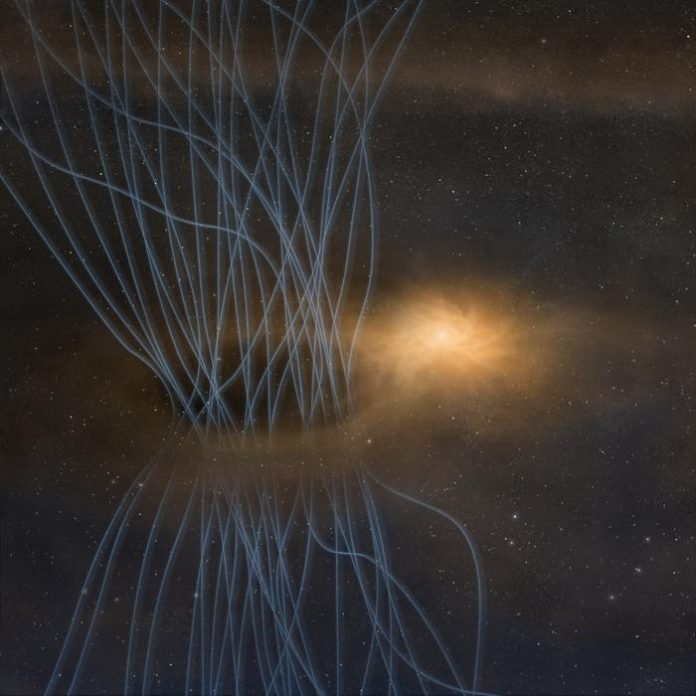
I’m really not sure what to call it but a ‘dusty sneeze’ is probably as good as anything.
We have known for some years that stars surround themselves with a disk of gas and dust known as the protostellar disk.
The star interacts with it, occasionally discharging gas and dust regularly. Studying the magnetic fields revealed that they are weaker than expected.
A new proposal suggests that the discharge mechanism ‘sneezes’ some of the magnetic flux out into space.
Using ALMA, the team are hoping to understand the discharges and how they influence stellar formation.
In a fairly inconspicuous part of the Galaxy, a star slowly formed out of a cloud of gas and dust.
This event took place around 4.6 billion years ago and soon, the hot young star began to clear the surrounding area of gas and dust. What remained was a disk surrounding the star known as a protostellar disk.
Eventually the planets of our Solar System formed. It is not unique to our own system though as there have been disks like this found around many stars.
A very well known example are the stars in the Trapezium cluster inside the Orion Nebula.
A team in Japan, from the Kyushu University have been examining data from the ALMA radio telescope to learn more about stars in the earliest stages of development.
To their surprise they discovered the disks around new stars seem to emit jets or plumes of dust and gas and even electromagnetic energy.
The team dubbed them ‘sneezes’ and its this process that seems to slowly erode the magnetic flux of a young star system.
One phenomenon of the disks is a powerful magnetic field which permeates through the region. It therefore carries a magnetic flux and herein lies the problem.
The magnetic fields would be far stronger than those observed if the magnetic flux had been retained from day one. History shows us, they didn’t seem to retain them so the flux has been slowly eroded away in new star and planetary systems.
One such proposal was that the field slowly decreased as the surrounding dust cloud collapsed into the core of the star. To explore the phenomenon the team studied MC 27, a system 450 light years away using ALMA, the Atacama Large Millimetre Array. In total, 66 radio telescopes pointed to the object from an altitude of 5,000 metres.
They found that there were ‘spike like’ structures that seemed to extend out by a few astronomical units (average distance between Sun and Earth.)
The team found that the features contained gas and dust but had a magnetic flux. Known as ‘interchange instability’, the field exhibits instabilities when it reacts with different densities of gas.
They referred to these, not as interchange instability but as a baby star’s sneeze. Just like a human sneeze which expels dust and gas or rather air from our bodies, so a young hot star ‘sneezing’ releases gas and dust from the disk.
Further exploration revealed signs of other plumes several thousands of astronomical units from the protostellar disk.
They suggest that these are evidence of other sneezes in the past. It’s not just on MC 27 though, the spikes have been seen in other star systems but more time is needed to be able to fully understand the implications of the discovery.
Written by Mark Thompson/Universe Today.



